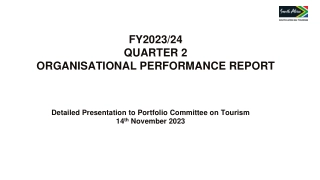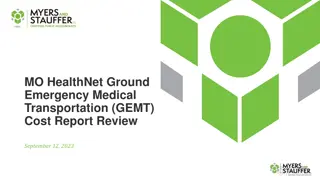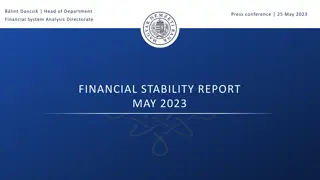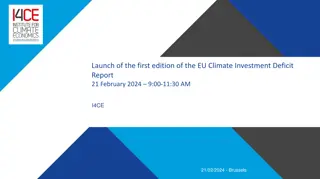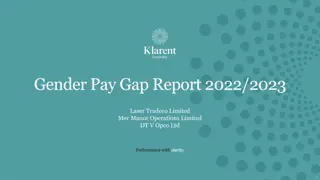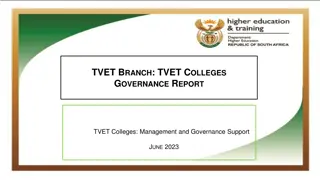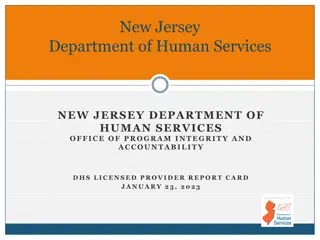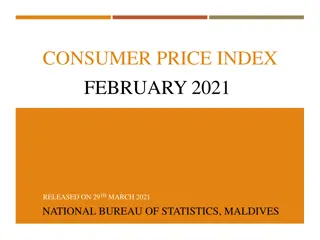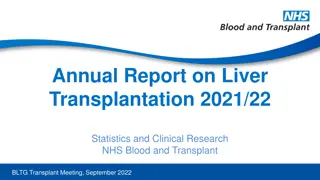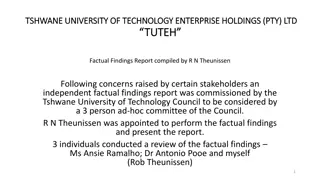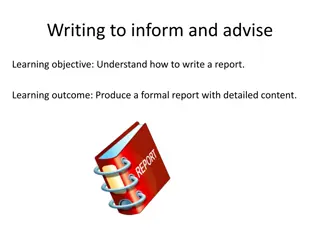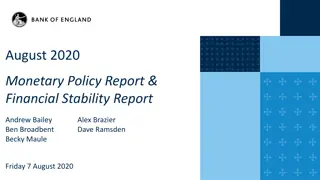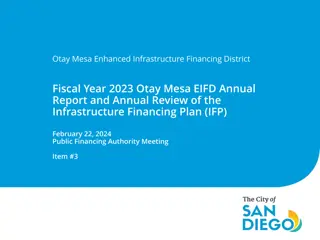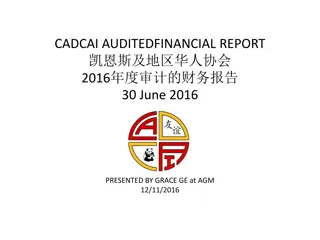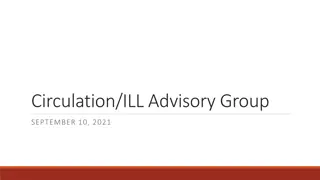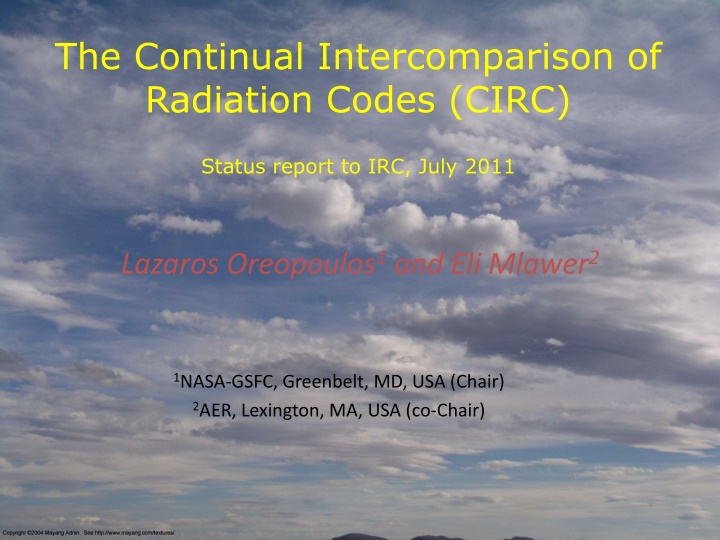
Radiative Code Intercomparison Activities and Progress Update
The Continual Intercomparison of Radiation Codes (CIRC) provides a standard for assessing the performance of radiation codes used in Large-Scale Models (LSMs). This report discusses the goals, activities, and participants involved in CIRC, highlighting recent submissions and the status of ongoing initiatives. The CIRC aims to ensure the quality and accuracy of radiation codes through observation-tested benchmarking and continual updates.
Download Presentation

Please find below an Image/Link to download the presentation.
The content on the website is provided AS IS for your information and personal use only. It may not be sold, licensed, or shared on other websites without obtaining consent from the author. If you encounter any issues during the download, it is possible that the publisher has removed the file from their server.
You are allowed to download the files provided on this website for personal or commercial use, subject to the condition that they are used lawfully. All files are the property of their respective owners.
The content on the website is provided AS IS for your information and personal use only. It may not be sold, licensed, or shared on other websites without obtaining consent from the author.
E N D
Presentation Transcript
The Continual Intercomparison of Radiation Codes (CIRC) Status report to IRC, July 2011 Lazaros Oreopoulos1 and Eli Mlawer2 1NASA-GSFC, Greenbelt, MD, USA (Chair) 2AER, Lexington, MA, USA (co-Chair)
What CIRC is about RT model intercomparison intended to be the standard for documenting the performance of RT codes used in Large-Scale Models (LSMs) Working group within IRC and GRP Goal is to have RT codes of GCMs (incl. IPCC) report performance against CIRC Phase 1 was launched on June 4, 2008 Phase 1a was launched on January 19, 2010 (16 simpler variants of Phase I cases) Website: http://circ.gsfc.nasa.gov How CIRC differs from previous intercomparisons: Observation-tested (LW) LBL calculations are used as radiative benchmarks Benchmark results are publicly available Observationally-based input (chiefly from an ARM product named BBHRP) Intended to have flexible structure and be continual (i.e. updated periodically)
CIRC activities since last report and status Submissions for Phase 1 sub-cases ( Phase 1a ) received Technical paper on Phase I to be submitted to JGR-Atmos now in draft2; to be submitted in August. CIRC now completely unfunded (neither co-chair has currently DOE-BER funding) No CIRC presentation at last GRP meeting (1-day only due to pan- GEWEX) Invitation to attend WGCM/WGNE meeting in October following letter of IRC to WGCM (Bony); CIRC will be represented
Longwave code participants Experiment variants Model Index Brief Model Description In LSM? Submitted By Reference(s) LBLRTM v.11.1/HITRAN 2004, MT_CKD_2.0, AER_V_2.0 0 No None Delamere, Mlawer Clough et al. (2005) RRTM-LW, 10-3000 cm-1, CKD, 16 bands, 256 g-points Mlawer et al. (1997); Clough et al. (2005); 1 No None Iacono, Mlawer RRTMG-LW, 10-3000 cm-1, CKD, 16 bands, 140 g-points Mlawer et al. (1997); Iacono et al. (2008) 2 Yes None Iacono CLIRAD-LW, 0-3000 cm-1, k- distribution and one- parameter scaling, 10 bands, 85/113 k-points 3 Yes High/Low accuracy Oreopoulos Chou et al. (2003) CCC 0-2500 cm-1, CKD, 9 bands, 56 g-points With/without scattering Li (2002); Li and Barker (2002); Li and Barker (2005); 4 Yes Cole, Li FLBLM, 40-3000 cm-1, line- by-line, FKDM, 40-3000 cm-1, CKD, 23 g-points CAM 3.1, 0-2000 cm-1, absorptiviy-emissivity approach With/without scattering 5 No Fomin Fomin (2006) 6 No None Fomin Fomin (2004) 7 Yes None Oreopoulos Collins et al. (2004) FLCKKR (LW), 0-2200 cm-1, CKD, 12 bands, 67 g-points Rose, Kratz, Kato, Charlock Fu and Liou (1992); Fu et al. (1997) 8 No None RRTMG-LW (as implemented in FMI ECHAM5.4), 10-3000 cm-1, 16 bands, 140 g-points Mlawer et al. (1997); Iacono et al. (2007) 9 Yes None R is nen ES, 10-3000 cm-1, 9 bands, ESF of band transmissions GISS, 50-2000 cm-1, CKD, 33 g-points With/without scattering With/without scattering Edwards and Slingo (1996); Edwards (1996) 10 Yes Manners Zhang, Rossow, Lacis 11 Yes Zhang et al. (2004)
Shortwave code participants Model Index Brief Model Description In LSM? Experiment variants Submitted By Reference(s) CHARTS v.4.04/LBLRTM v.11.1/ HITRAN2004, line-by-line Moncet and Clough (1997); Clough et al. (2005) 0 No None Delamere, Mlawer RRTM-SW, 0.2-12.2 m, CKD, 14 bands, 224 g-points 1 No None Iacono, Mlawer Clough et al. (2005) RRTMG-SW, 0.2-12.2 m , CKD, 14 bands, 112 g-points 2 Yes None Iacono, Mlawer Iacono et al. (2008) CLIRAD-SW, 0.175-10 m, 11 bands, pseudo- monochromatic/k-distribution hybrid, 38 k-points Two Rsfc averaging methods Chou et al. (1998); Chou and Suarez (2002) 3 Yes Oreopoulos CCC, 0.2-9.1 m, CKD, 4 bands, 40 g-points Three Rsfc averaging methods 4 Yes Cole, Li Li and Barker (2005); Li et al. (2005) FLBLM/ HITRAN 11v, 0.2-10 m, line-by-line 5 No None Fomin Fomin and Mazin (1998) FKDM, 0.2-10 m, CKD, 15 g- points Two treatments of cloud optical properties 6 No Fomin Fomin and Correa (2005) CAM 3.1, 0.2-5.0 m, 19 spectral and pseudo-spectral intervals, Two Rsfc averaging methods Briegleb (1992); Collins (2001); Collins et al. (2004) 7 Yes Oreopoulos FLCKKR (SW), 0.175-4.0 m, CKD, 18 bands, 69 g-points Two Rsfc averaging methods 8 No Rose, Kratz, Kato, Charlock Fu and Liou (1992) FMI/ECHAM5.4, 0.185-4 m, 6 bands, Pad approximants to fit transmission functions Edwards-Slingo 0.2-10 m, 6 bands, ESF of band transmissions NASA-GISS v. D, 0.2-5.0 m, CKD, 15 g-points COART, 0.25-4.0 m, 26 bands, k-distribution CLIRAD-SW modified, 0.2 -10 m, 8 bands, k-distribution 15 k-points Two Rsfc averaging methods Fouquart and Bonnel (1980); Cagnazzo et al. (2007) 9 Yes R is nen Two Rsfc averaging methods 10 Yes Manners Edwards and Slingo (1996) Three Rsfc averaging methods 11 Yes Zhang, Rossow, Lacis Zhang et al. (2004) 12 No None Jin, Charlock Jin et al. (2006) Two Rsfc averaging methods 13 No Oreopoulos Tarasova and Fomin (2007)
Overall performance j- Fn,0 Fn,0 Nf j Nc Fn,i 100 NcNf etot,i(%) = j n=1 j=1

